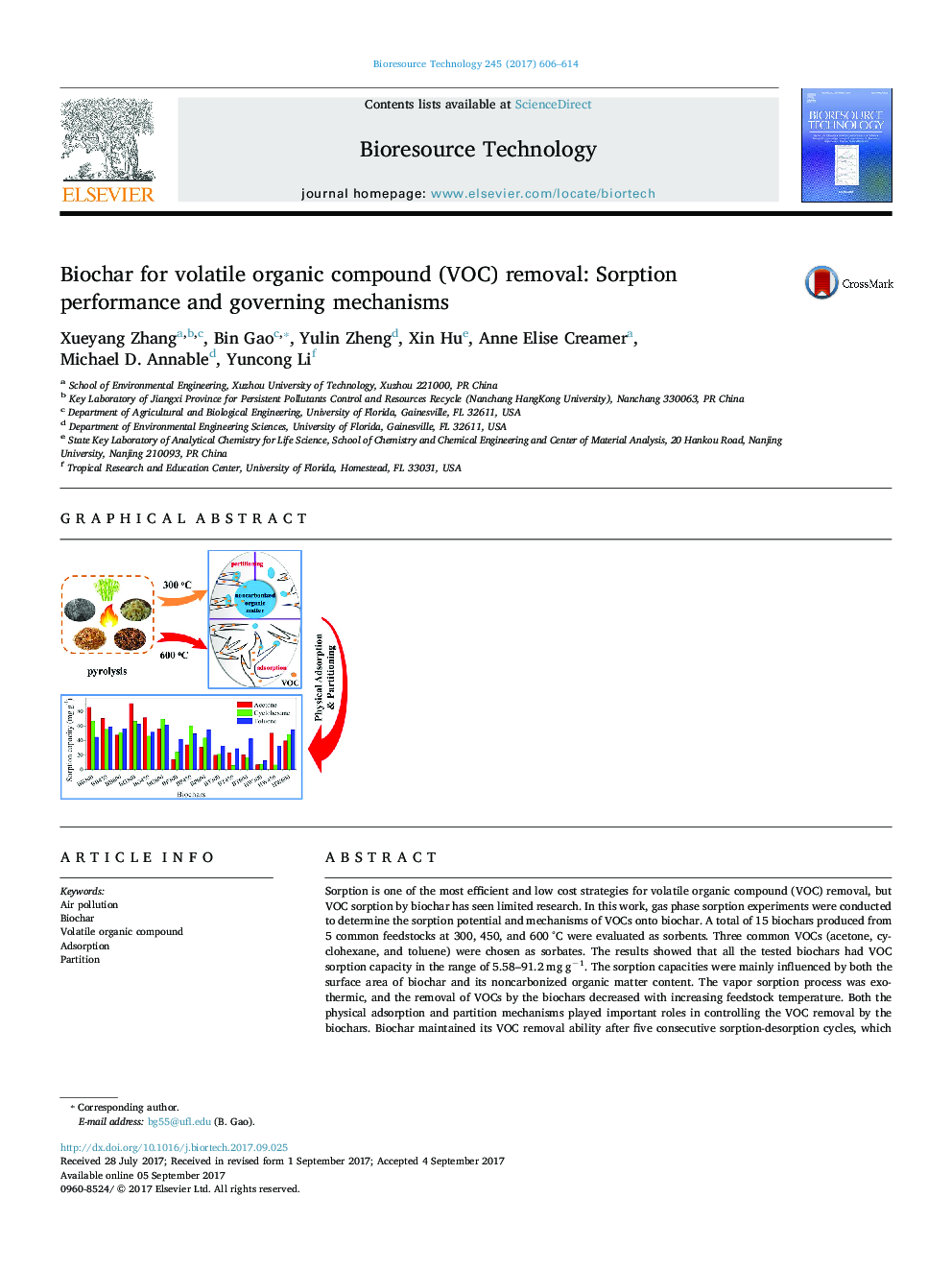| Article ID | Journal | Published Year | Pages | File Type |
|---|---|---|---|---|
| 4996784 | Bioresource Technology | 2017 | 9 Pages |
â¢VOC sorption capacities of biochars were between 5.58 and 91.16 mg gâ1.â¢VOC removal was strongly affected by biochar's surface area.â¢VOC removal was strongly affected by biochar's noncarbonized organic matter content.â¢Physical adsorption and partitioning were the governing mechanisms.
Sorption is one of the most efficient and low cost strategies for volatile organic compound (VOC) removal, but VOC sorption by biochar has seen limited research. In this work, gas phase sorption experiments were conducted to determine the sorption potential and mechanisms of VOCs onto biochar. A total of 15 biochars produced from 5 common feedstocks at 300, 450, and 600 °C were evaluated as sorbents. Three common VOCs (acetone, cyclohexane, and toluene) were chosen as sorbates. The results showed that all the tested biochars had VOC sorption capacity in the range of 5.58-91.2 mg gâ1. The sorption capacities were mainly influenced by both the surface area of biochar and its noncarbonized organic matter content. The vapor sorption process was exothermic, and the removal of VOCs by the biochars decreased with increasing feedstock temperature. Both the physical adsorption and partition mechanisms played important roles in controlling the VOC removal by the biochars. Biochar maintained its VOC removal ability after five consecutive sorption-desorption cycles, which indicated good reusability. Findings of this work suggest that biochar is a promising alternative sorbent for gaseous VOC removal.
Graphical abstractDownload high-res image (106KB)Download full-size image
